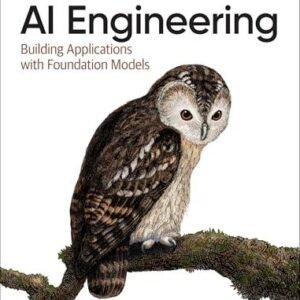In today’s fast-paced and interconnected global marketplace, effective supply chain management has never been more crucial for businesses striving for success. The rise of artificial intelligence (AI) presents a transformative opportunity to revolutionize traditional supply chain processes, making them smarter, faster, and more efficient. This article delves into how AI software solutions are enhancing supply chain management by enabling businesses to gain deeper insights, streamline operations, and respond dynamically to market changes. As technology continues to evolve, understanding the role of AI in supply chains can provide a competitive edge, ensuring that businesses not only keep pace with industry trends but thrive in an increasingly complex environment. Join us as we explore the innovative applications of AI in supply chain management, showcasing real-world examples and practical tips for implementation.
Table of Contents
- Understanding the Role of AI in Supply Chain Optimization
- Key AI Technologies Transforming Inventory Management
- Leveraging Predictive Analytics for Demand Forecasting
- Implementing AI Solutions for Enhanced Supplier Collaboration
- The Way Forward
Understanding the Role of AI in Supply Chain Optimization
AI technologies serve as catalysts for transformation across various facets of supply chain management. By leveraging machine learning, predictive analytics, and natural language processing, organizations can make informed decisions that enhance operational efficiency. For instance, AI algorithms analyze historical data to predict future demand patterns, allowing supply chain managers to optimize inventory levels and reduce waste. Other capabilities include:
- Real-time monitoring: AI systems track shipment statuses and identify disruptions in the supply chain instantly.
- Supplier selection: Advanced analytics help in evaluating suppliers based on performance metrics and risk factors.
- Cost reduction: Automation powered by AI minimizes labor costs while increasing accuracy in order management.
Moreover, AI can enhance collaborations among stakeholders within the supply chain ecosystem. By utilizing chatbots and virtual assistants, businesses foster seamless communication, making it easier to address emerging issues and share pertinent information. AI-driven tools also facilitate enhanced forecasting by drawing insights from diverse data sources, including market trends and consumer behavior. The impact of these technologies can be summarized in the table below:
| AI Application | Benefits |
|---|---|
| Predictive Analytics | Improved demand forecasting and inventory management |
| Automation | Reduced processing time and errors |
| Data Insights | Informed decision-making and strategic planning |
Key AI Technologies Transforming Inventory Management
Artificial Intelligence is revolutionizing inventory management by introducing advanced technologies that optimize operations and drive efficiency. Predictive analytics is one such transformative tool that leverages historical data to forecast demand, enabling businesses to maintain optimal stock levels while minimizing excess inventory. By analyzing patterns and trends, companies can adjust their purchasing strategies in real-time, thus reducing costs associated with overstock and stockouts. Additionally, machine learning algorithms continually improve inventory accuracy through consistent learning from past data, ensuring smarter decision-making in inventory replenishment.
Another crucial advancement is the use of computer vision technology within warehouses to streamline the inventory tracking process. By employing smart cameras and real-time image recognition, businesses can achieve unparalleled visibility into their stock levels and locations. This technology drastically reduces human error and enhances the speed of inventory count. Moreover, automated ordering systems powered by AI can autonomously place purchase orders when stock falls below predetermined thresholds, ensuring seamless supply chain operations. The integration of these technologies not only improves operational efficiency but also enhances overall customer satisfaction by ensuring product availability.
Leveraging Predictive Analytics for Demand Forecasting
In today’s fast-paced market, businesses must anticipate customer demands with precision to stay ahead of the competition. Predictive analytics offers a powerful approach to achieve this. By leveraging historical data and advanced algorithms, companies can uncover patterns that reveal future purchasing behaviors. Key benefits of using predictive analytics for demand forecasting include:
- Improved Accuracy: Enhanced prediction of customer needs helps in reducing inventory shortages or surpluses.
- Cost Efficiency: Optimizing stock levels cuts down on holding costs and wastage.
- Informed Decision-Making: Data-driven insights empower management to make strategic decisions confidently.
Implementing predictive analytics involves various steps, including data collection, model building, and continuous feedback loops. These systems integrate seamlessly with existing AI software solutions, allowing for real-time updates and adjustments based on market conditions. Organizations can utilize tools such as:
| Tool | Functionality |
|---|---|
| Forecasting Software | Provides accurate sales predictions using historical data. |
| Business Intelligence Dashboards | Visualizes demand trends and insights for better strategic planning. |
| Machine Learning Algorithms | Continuously improves predictions based on new data. |
Implementing AI Solutions for Enhanced Supplier Collaboration
In today’s interconnected market, leveraging AI to enhance collaboration with suppliers is pivotal for achieving a responsive and efficient supply chain. AI solutions facilitate real-time information sharing, predictive analytics, and automated communications, enabling smoother interactions and fostering stronger partnerships. By implementing intelligent systems, businesses can:
- Predict Demand Trends: Utilize AI algorithms to analyze historical data alongside market signals, allowing suppliers to adjust their production and inventory levels proactively.
- Enhance Order Accuracy: Incorporate automated systems that minimize errors in order fulfillment and communication, ensuring that expectations are aligned.
- Streamline Collaboration: Deploy collaborative platforms powered by AI that provide a centralized space for discussion, document sharing, and project tracking, giving all parties instant access to critical information.
Furthermore, AI enhances transparency in supplier relationships, enabling both parties to track and analyze performance metrics effectively. By establishing a data-driven ecosystem, organizations can optimize their supplier base based on key performance indicators. Here’s a simple overview of the major impacts:
| Impact Area | AI Contribution |
|---|---|
| Cost Reduction | Improved negotiation through data analysis |
| Risk Management | Early detection of potential supply chain disruptions |
| Innovation | Joint-development initiatives driven by data insights |
The Way Forward
the integration of AI software solutions into supply chain management is not just a trend; it’s a transformative strategy that can propel businesses towards greater efficiency, resilience, and profitability. As we’ve explored, AI technologies offer unprecedented capabilities in demand forecasting, inventory optimization, and risk management, enabling companies to stay ahead of the competition in an increasingly unpredictable market.
Embracing AI is not merely about adopting new tools; it’s about rethinking processes and fostering a culture of innovation. By investing in these advanced solutions, organizations can unlock valuable insights, streamline operations, and drive sustainability throughout their supply chains.
As we look toward the future, it’s clear that the companies that leverage AI effectively will be the ones to thrive in ever-evolving landscapes. So, whether you’re a supply chain manager, an industry leader, or a tech enthusiast, now is the time to explore how AI can revolutionize your supply chain strategy. Let’s embrace this technological revolution together, turning challenges into opportunities that pave the way for a smarter, more agile future in supply chain management.
Thank you for joining us on this journey into the world of AI and supply chain optimization. We hope you found the insights valuable and inspiring. Stay tuned for more articles that explore the innovations shaping our industries!





